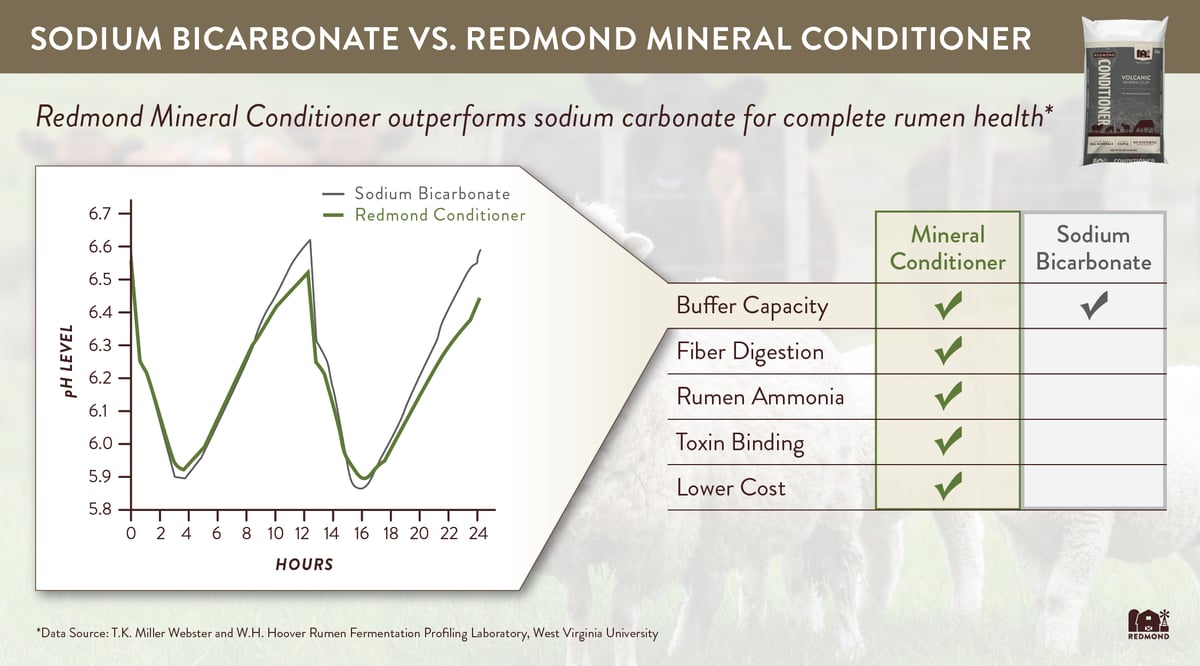What Are Ruminants?
Ruminants are a group of herbivorous animals (which included cattle, sheep, and goats) that have a unique digestive system. Ruminants have 1 stomach with 4 compartments: the rumen, reticulum, omasum, and abomasum.(1) (Check out these images showing the interior lining of the 4 areas of a ruminant digestive tract.)
Rumen
The rumen is the largest stomach compartment in ruminants, and can hold as much as 40 gallons in a mature cow. Ruminants depend on fermentation for digestion, and the rumen acts as a large holding vat designed to do just that—ferment feedstuffs.
How does it work? When dry feed enters a cow’s rumen, it absorbs consumed water. The wet feed, combined with the anaerobic climate of the rumen, then provides an ideal environment for bacteria to grow and fermentation to occur.(2) Fiber particles remain in the rumen up to 48 hours during the fermentation process before being absorbed by the cow and used as energy.
What Are Rumen Microbes and What Are Their Function?
Paul Weimer, ruminant microbiologist with the U.S. Dairy Forage Research Center, said, “The rumen of the dairy cow is one of the richest and most productive microbial habitats on earth.”(3) The microbes that colonize the rumen number in the billions and are obtained from a cow’s environment, other animals the cow comes into contact with, and bacteria found on feeds.(2) Rumen microbes are critical to health—in fact, without them, a cow would die.(3)
Weimer noted that a cow and her rumen microbes “are well-matched partners.” While each cow contains a small set of microbial species that are present in the general cow population, each individual cow also has its own unique microbial community.
According to Weimer, rumen microbes perform 3 major functions:
- Conversion of carbohydrates to volatile fatty acids, the main energy source for a cow and the main source of fat for milk
- Conversion of non-protein nitrogen to high-quality microbial protein
- Metabolizing of some plant toxins
Wondering what specific microbial groups exist in the rumen and what role they serve? See Weimer’s slide presentation for a list.
How Can Dairy Producers Optimize Rumen Function?
- Avoid sudden changes in feed.(3) Introduce new feed sources and rations gradually over the course of several feedings. Rapid diet changes cause mass die-off in rumen microbes.
- Avoid changes in rumen temperature.(3) Prevent cows from consuming very cold water or frozen silage in the winter, and minimize risk of heat stress during the summer.
- Maintain correct pH level.(4) A proper pH level in the rumen is essential for microbe survival. A level of 6.2 to 7.0 is ideal.
- Provide clean, fresh water.(4) The rumen requires a lot of water. Make sure cows have access to clean water, particularly at exit and entry points of the dairy.
- Provide adequate fiber.(4) The rumen requires longer fiber for proper function and nutrient digestion. Feed particles of 2-5 centimeters will stimulate cud chewing, rumination, and produce sufficient saliva.
- Consistent supply of nutrients.(4) Cows need a consistent and constant supply of nutrients for optimal rumen pH, microbe growth, and activity. Make sure feed is always available, and avoid slug feeding.
How Can Redmond Improve Rumen Health?
Adding Redmond Conditioner (our all-natural trace mineral silicate) to your feed program, can help your herd maintain a healthier rumen by providing these important benefits:
- Contains over 50 natural minerals for optimum health and nutrition
- Helps animals better utilize the nutrients in their feed
- Supports healthy microbe colonies
- Improves nitrogen utilization in the rumen
- Binds toxins in the rumen
- Inhibits yeast and toxin growth in feed total mixed ration
- Keeps rumen pH from becoming too acidic. (See the chart below for a study done by West Virginia University)

(This study compares the buffering abilities of Redmond Conditioner to sodium bicarbonate. Feeding occurred at 0 and 12 hours, at 8 ounces per head per day. Rumen pH dropped during digestion, slowly rising again until the next feeding.)
The West Virginia University study found that Redmond Conditioner not only effectively buffers the rumen, but also naturally improves your cows’ digestion and nutrition, and will help you maintain a healthier and more productive herd.
Learn more about how clay conditioners help bind to toxins in the rumen.
Give Redmond a call today at  to maximize rumen health for your entire herd!
to maximize rumen health for your entire herd!
References
- “Understanding the Ruminant Animal Digestive System,” Mississippi State University Extension, U.S. Department of Agriculture, (2017), http://extension.msstate.edu/publications/publications/understanding-the-ruminant-animal-digestive-system
- “Rumen Development in the Dairy Calf,” eXtension, United States Department of Agriculture, (August 16, 2019), https://dairy-cattle.extension.org/rumen-development-in-the-dairy-calf/
- “The Secret Life of Rumen Microbes,” Paul Weimer, U.S. Dairy Forage Research Center, USDA-ARS, https://www.ars.usda.gov/ARSUserFiles/50901500/pdf's/6_Weimer_rumen%20microbes.pdf
- “Managing for healthy rumen function,” Department of Agriculture and Fisheries, Queensland Government, (Last updated: 07 Mar 2013), https://www.daf.qld.gov.au/business-priorities/agriculture/animals/dairy/nutrition-lactating-cows/healthy-rumen-function#:~:text=For%20optimal%20rumen%20pH%20and,access%20to%20forage%20after%20milking.

